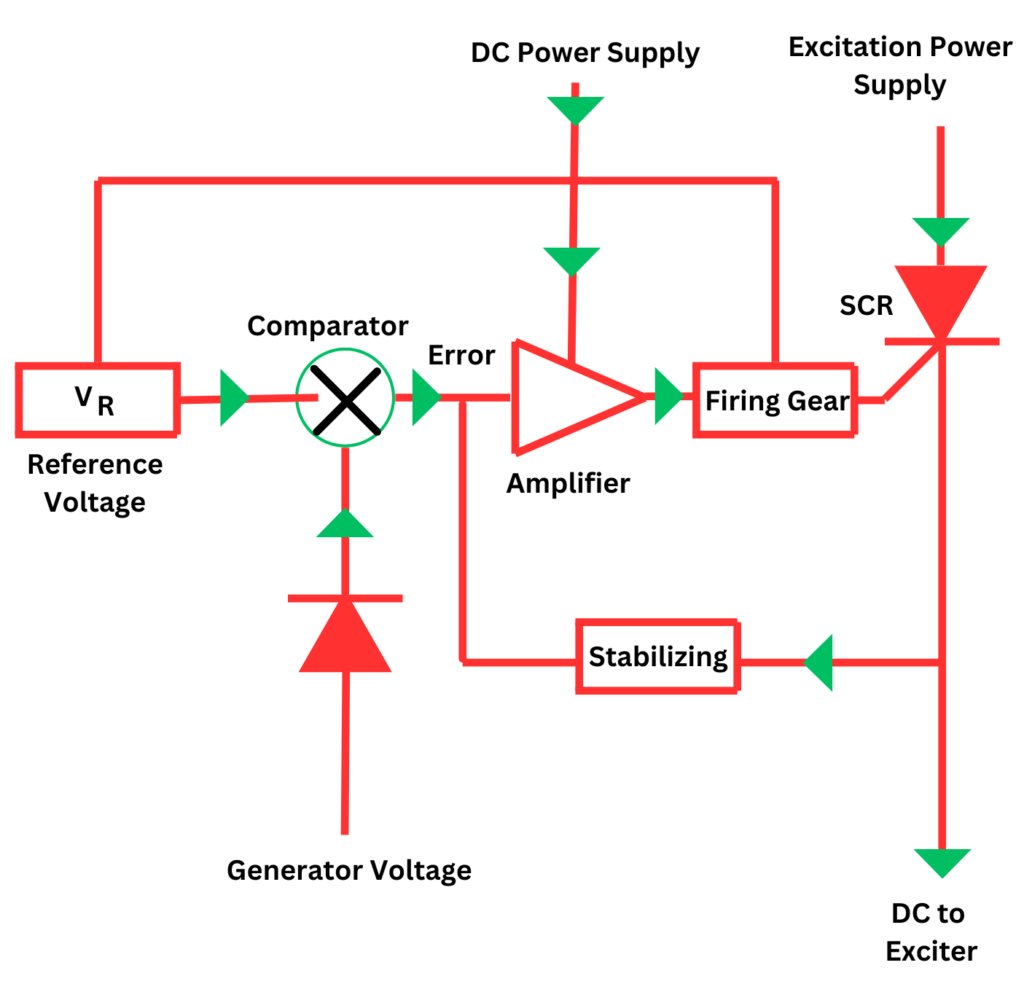The automatic voltage regulator regulates the voltage of generators, transformers, or feeders. When the electrical load draws current from the generator or a transformer, the voltage drop occurs in the transmission line or cable. The transmission media has a certain resistance, and the IR voltage drop in the transmission line causes a lower voltage at the receiving end. You should be aware that the voltage drop in the line depends on the power factor of the load. Loads with a lower power factor draw more current, causing more voltage drop.
It is crucial to maintain the voltage as per the rated voltage of the electrical load. The performance of the electrical equipment deteriorates if the supply voltage is not within the range of the rated voltage. The voltage regulator is a device that controls and maintains the output voltage to a set limit.
There are various methods used to regulate the AC and DC supply voltage.
- The over-compound generators regulate the voltage of feeders of equal length in the DC system. However, if the feeder length is unequal, the feeder booster regulates the voltage.
- Booster transformers, induction regulators, shunt condensers, automatic voltage regulators (AVR), etc., regulate AC supply voltage.
After understanding the necessity of a voltage regulator, we will discuss how it maintains the desired voltage.
Working Principle of Voltage Regulator
The controller of the automatic voltage regulator compares the actual voltage and set point and outputs an error signal that governs the exciter power supply. The output is taken from the generator output after the voltage is stepped down through a potential transformer. The silicon-controlled rectifier(SCR) controls the exciter’s output voltage.
The circuit diagram of the automatic voltage regulator is shown below.

- When the voltage generated is below the set point, the controller outputs an amplified error signal, which decreases the firing angle of SCR, causing the exciter voltage to increase. The increase in exciter voltage leads to an increase in both the field current and the field flux. As a result, the generator voltage will also increase until it reaches the automatic voltage regulator’s set point. This situation happens when the load on the generator increases.
- If the generator operates at a light or no load, its voltage may exceed the set point. To address this issue, the controller outputs an amplified error signal, which increases the firing angle of the SCR, causing the exciter voltage to decrease. The reduction in exciter voltage leads to a decrease in both the field current and the field flux. This decrease in the field flux, in turn, reduces the generator’s output voltage.
To maintain a consistent voltage output, the excitation system of an alternator must adjust to sudden changes in load. This is where the automatic voltage regulator (AVR) comes in. The AVR governs the exciter field current and modifies the output voltage. However, it’s important to note that the AVR may not respond as quickly as needed during violent fluctuations.
Quick-acting voltage regulators based on the overshooting-the-mark principle are used to get a quick response. In this principle, when the load increases, the excitation voltage also increases. However, before the voltage reaches the value corresponding to the increased excitation, the regulator reduces the excitation to an appropriate value. This ensures that the voltage stays within the desired range and prevents any damage to the system.
Application of the Automatic Voltage Regulator
The applications are listed below.
- It regulates the system voltage and brings the machine closer to stable operation.
- When multiple alternators operate in parallel, they share the reactive load between them.
- The automatic voltage regulators reduce overvoltages caused by sudden load loss on the system.
- During fault conditions, it enhances the system’s excitation to ensure maximum synchronizing power is available during fault clearance.
best website for all engineers